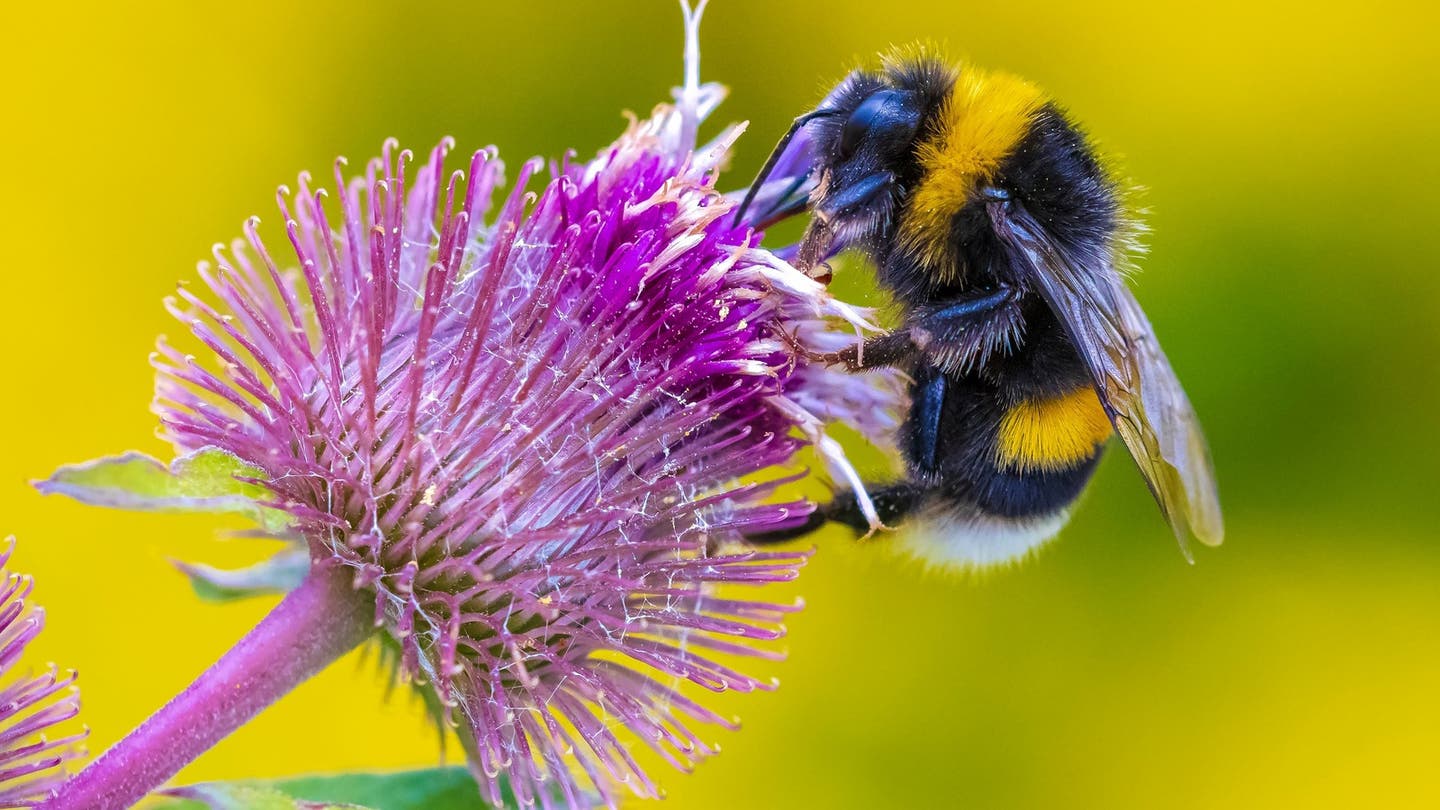Scientists discover the ancient link between bees and the evolution of colors in flowers
Findings indicate that early flowers evolved vibrant colors to stand out against their backgrounds, aiming to attract ancient pollinators

Popular honey-producing Western honey bees. (CREDIT: Creative Commons)
A recent study, published in the Proceedings of the Royal Society, delved into the visibility of early flowering plants to pollinators like bees and birds.
Lead author Associate Professor Alan Dorin, also the Director of the NativeBee+Tech Facility at the Faculty of Information Technology at Monash University, shed light on the research, emphasizing the importance of understanding how insects perceive their environment.
According to Dorin, insects such as bees developed visual perception long before the emergence of flowers. This ability allowed them to navigate among various natural elements like rocks, leaves, sticks, and bark.
"Our findings indicate that early flowers evolved vibrant colors to stand out against their drab backgrounds, aiming to attract ancient pollinators," Dorin stated.
Related Stories:
To examine whether bees perceive their surroundings similarly to their ancestors, the researchers conducted experiments comparing bees' color perception with simulated prehistoric environments.
"Considering Australia's ancient geological history, we analyzed color spectrum data from Australian bushlands spanning from Cairns to Victoria's southern tip, mimicking landscapes from the Mesozoic era," Dorin explained.
Associate Professor Adrian Dyer, a vision scientist and co-author of the study from Monash University's Department of Physiology, highlighted the significant correlation between the visual perception of ancient pollinators and modern bees in guiding flower color evolution.
Sample surfaces encountered as flower backgrounds by pollinators shown here with Pig face (Carpobrotus sp.). (CREDIT: Proceedings of the Royal Society)
"Our research unveils that bees, like their predecessors, possess ultraviolet (UV), blue, and green photoreceptors. This explains the prevalence of colors like yellow in modern flowers, as they are easily perceived by bees," Dyer explained.
The implications of this research extend beyond understanding ancient ecosystems. By shedding light on the evolutionary dynamics between flowers and pollinators, this study provides valuable insights into contemporary plant pollination.
Density estimates of the distribution of marker points for simulated backgrounds generated from our database of natural samples (brown, N = 507 samples (n = 346 rock/mineral samples, 65 green leaves, 96 dry leaves, bark, wood etc.), more than 5% reflectance change threshold), Australian flowers pollinated only by insects (blue, 177 markers, N = 153 samples, >20% reflectance change threshold) and pollinated only by birds (pink, 49 markers, N = 68 samples, >20% reflectance change threshold). (CREDIT: Proceedings of the Royal Society)
"These findings could revolutionize our approach to plant pollination in modern agriculture, paving the way for advancements in smart farming and facilitating further research in crop pollination efficiency," Dyer noted.
The study, a collaborative effort involving experts from Monash University, the University of Melbourne, the University of Bayreuth (Germany), and Indiana University (USA), underscores the interdisciplinary nature of scientific research and its global reach.
The cumulative frequency of the marker points for simulated Australian natural backgrounds (brown), flowers pollinated only by insects (blue) and birds (pink) reveals that only 11% of background marker points in the simulated assemblages lie to the left of the center line (500 nm, chosen for illustrative purposes), while 58% of insect and 41% of bird-pollinated flower marker points lie to its left. (CREDIT: Proceedings of the Royal Society)
The research was supported by the Australian Research Council's Discovery Projects funding scheme, and partially funded by the German Federal Ministry of Education (BMBF).
To learn more about the NativeBee+Tech Facility at Monash University’s Faculty of Information Technology, please visit: https://www.monash.edu/it/nativebee
For more science and technology stories check out our New Discoveries section at The Brighter Side of News.
Note: Materials provided above by The Brighter Side of News. Content may be edited for style and length.
Like these kind of feel good stories? Get the Brighter Side of News' newsletter.
Joshua Shavit
Science & Technology Writer | AI and Robotics Reporter
Joshua Shavit is a Los Angeles-based science and technology writer with a passion for exploring the breakthroughs shaping the future. As a contributor to The Brighter Side of News, he focuses on positive and transformative advancements in AI, technology, physics, engineering, robotics and space science. Joshua is currently working towards a Bachelor of Science in Business Administration at the University of California, Berkeley. He combines his academic background with a talent for storytelling, making complex scientific discoveries engaging and accessible. His work highlights the innovators behind the ideas, bringing readers closer to the people driving progress.



